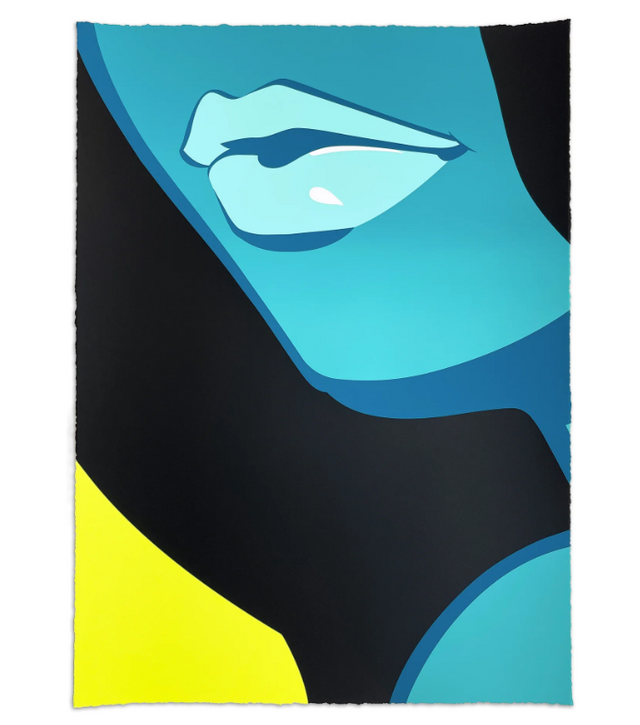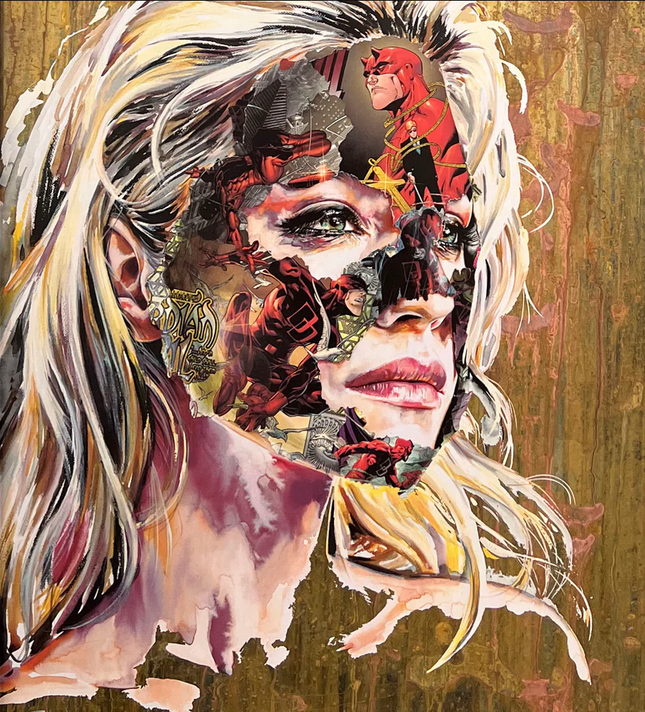
Hair

Sandra Chevrier La Cage Et 'Acte De Foi Brass Silkscreen Print by Sandra Chevrier
La Cage Et 'Acte De Foi Brass Silkscreen Print by Sandra Chevrier The Cage and Leap of Faith Hand-Pulled 24-Color on 3mm Corroded Brass Metal Limited Edition Artwork. 2021 Signed & Numbered Limited Edition of 10 Artwork Size 27.56x38.58 Silkscreen Print. In French, La Cage Et 'Acte De Foi Means "The Cage and Leap of Faith" La Cage Et 'Acte De Foi: A Study in Metal by Sandra Chevrier Sandra Chevrier's "La Cage Et 'Acte De Foi" is a riveting piece that encapsulates the vibrancy of street pop art and graffiti artwork while embodying the ethos of pop art's direct engagement with contemporary culture. This limited-edition artwork, released in 2021, is a testament to Chevrier's distinctive style, which often features layered imagery combining the raw expressiveness of street art with the precision of acceptable art practices. The Artistic Narrative of Sandra Chevrier's Silkscreen Print The piece, whose title translates to "The Cage and Leap of Faith," is a hand-pulled 24-color silkscreen print on 3mm corroded brass metal. Measuring 27.56x38.58 inches, the artwork is a visual spectacle and a conceptual exploration. Chevrier's work is known for using comic book excerpts juxtaposed against realistic depictions of the human form, particularly female faces. The effect is a collage of emotions and cultural references that speak to the internal and external battles of identity and perception. Examining the Techniques and Symbolism in Chevrier's Work Chevrier's technique in this piece is noteworthy, as she employs many colors to bring depth and texture to the surface of the metal, a material that itself connotes both strength and the passage of time—using brass as a canvas adds an element of industrial grit to the work. At the same time, the corrosion process she applies ensures that each piece in the limited edition of ten is unique, echoing the individuality of human experience. The imagery Chevrier chooses is equally significant. The partial faces of women are depicted with a sense of both beauty and melancholy, as the superimposed comic book scenes suggest narratives of struggle, power, and resilience. The "cages" in Chevrier's works are metaphors for the societal expectations and constraints placed upon individuals, particularly women, and the 'leap of faith' represents the courage required to transcend these boundaries. Impact of 'La Cage Et 'Acte De Foi' in Contemporary Art Discourse The release of "La Cage Et 'Acte De Foi" was met with enthusiasm in the art community as collectors and critics alike sought to decipher the layered meanings within Chevrier's work. The limited edition series quickly became a sought-after item for its visual appeal and its contemplative narrative. Chevrier's work bridges the ephemeral nature of street art and the permanence associated with metalwork, creating a dialogue between the transient and the eternal. Cultural Resonance of Sandra Chevrier's Limited Edition Artwork The cultural resonance of Chevrier's "La Cage Et 'Acte De Foi" is amplified by the artwork's engagement with themes of feminism, identity, and liberation. As street pop art and graffiti artwork continue to find their place in the pantheon of recognized art forms, pieces like Chevrier's underscore the relevance of these mediums in addressing poignant social issues. Her work beautifies the space it occupies and prompts introspection and discussion, hallmarks of influential art. In summary, Sandra Chevrier's "La Cage Et 'Acte De Foi" expresses street pop art sensibilities fused with traditional artistic mediums. The use of corroded brass metal as a substrate for the complex silkscreen process exemplifies contemporary art's innovative spirit, and the series's limited edition nature underscores each piece's value. Through her art, Chevrier continues to challenge and inspire, making "La Cage Et 'Acte De Foi" a significant contribution to the narrative of modern art.
$7,057.00


